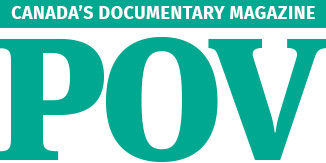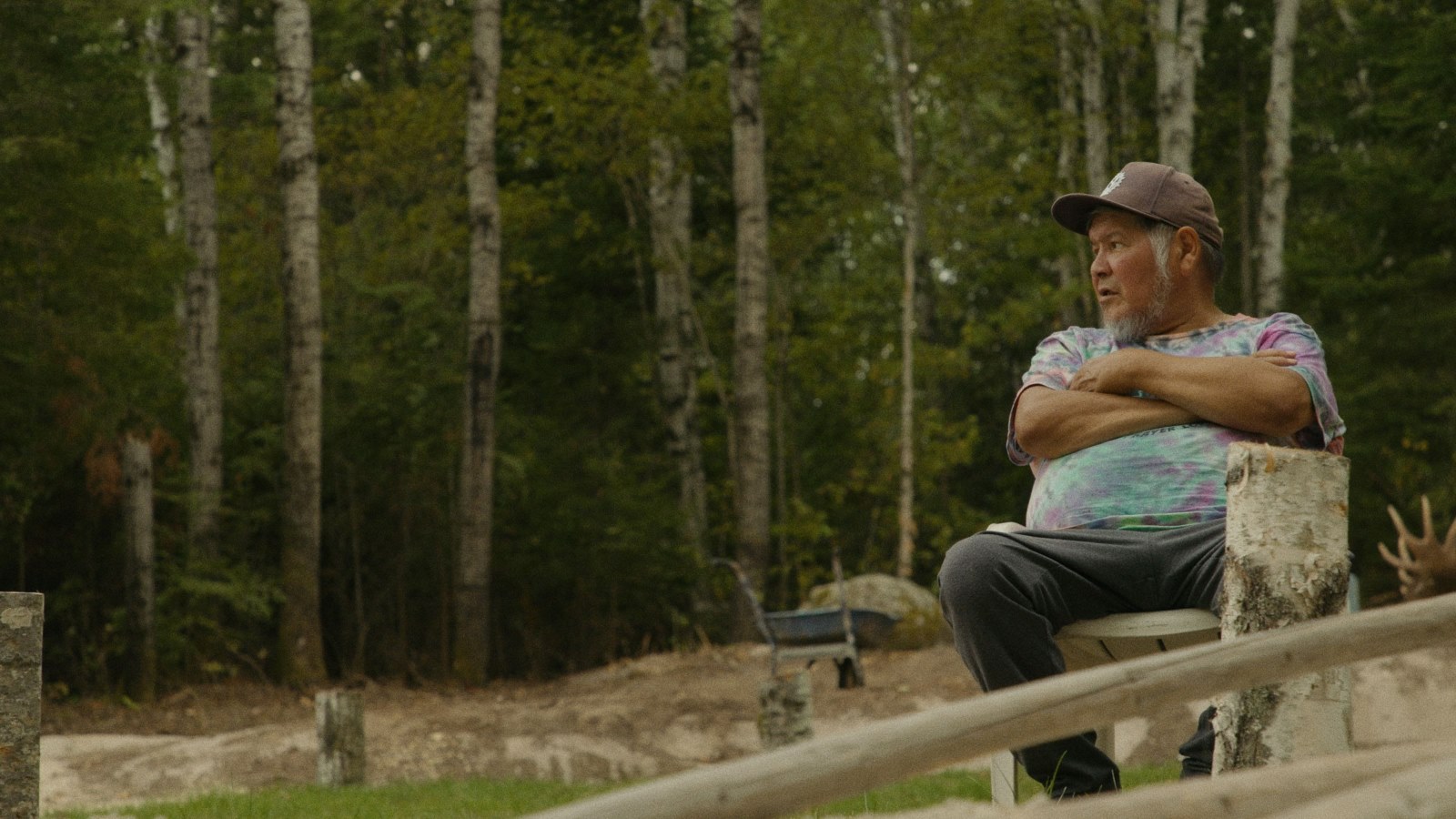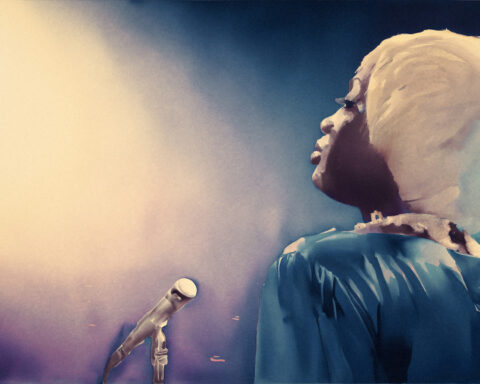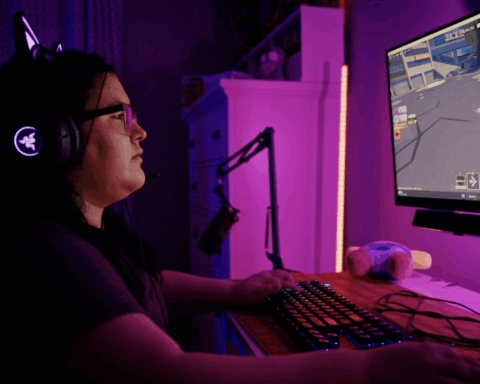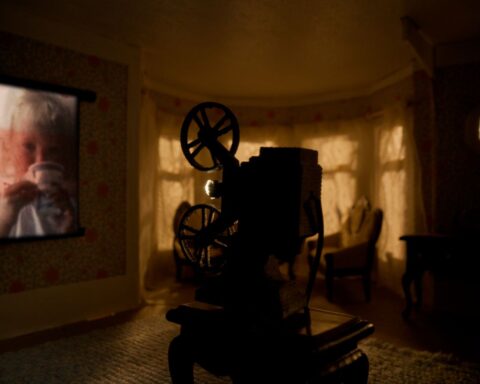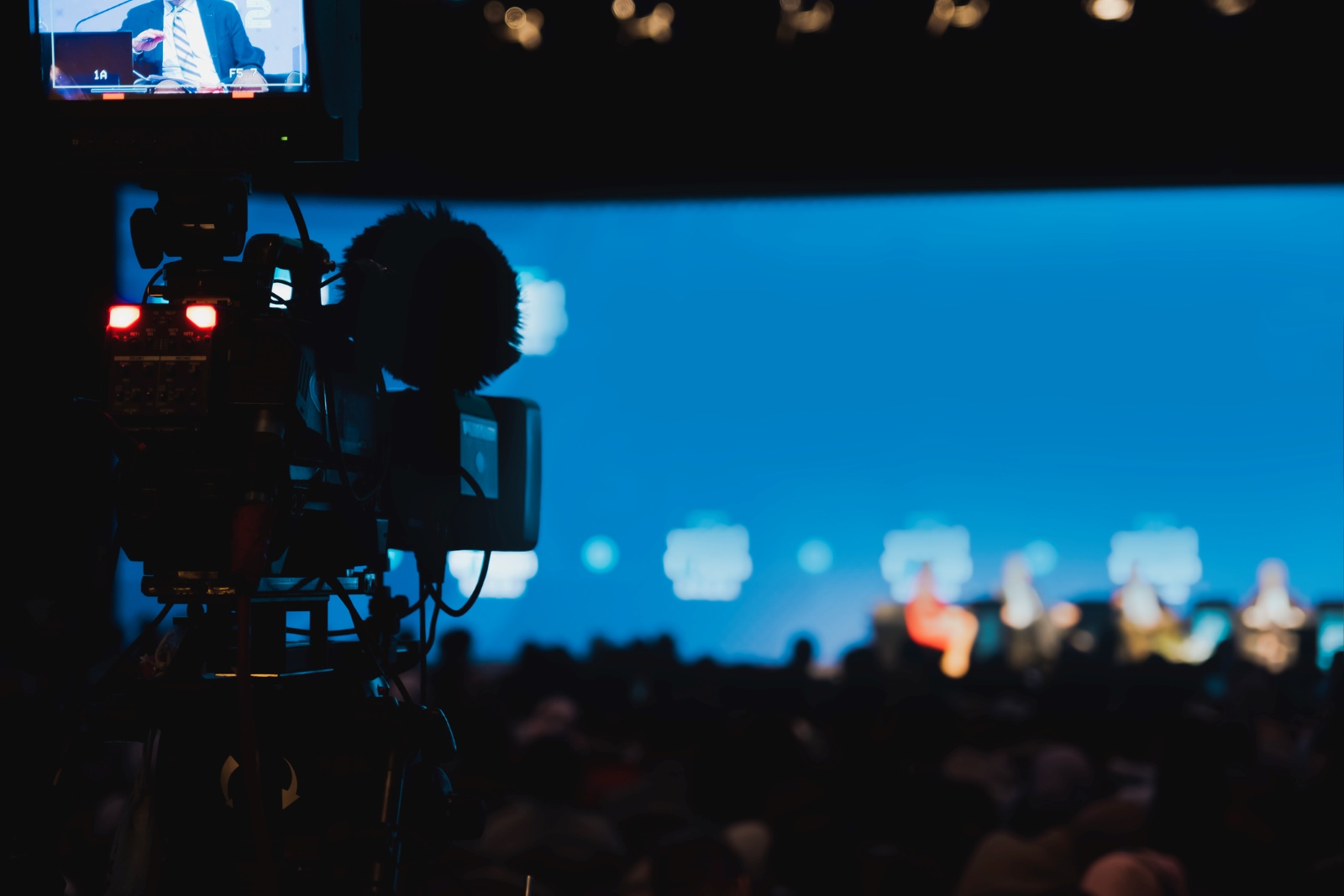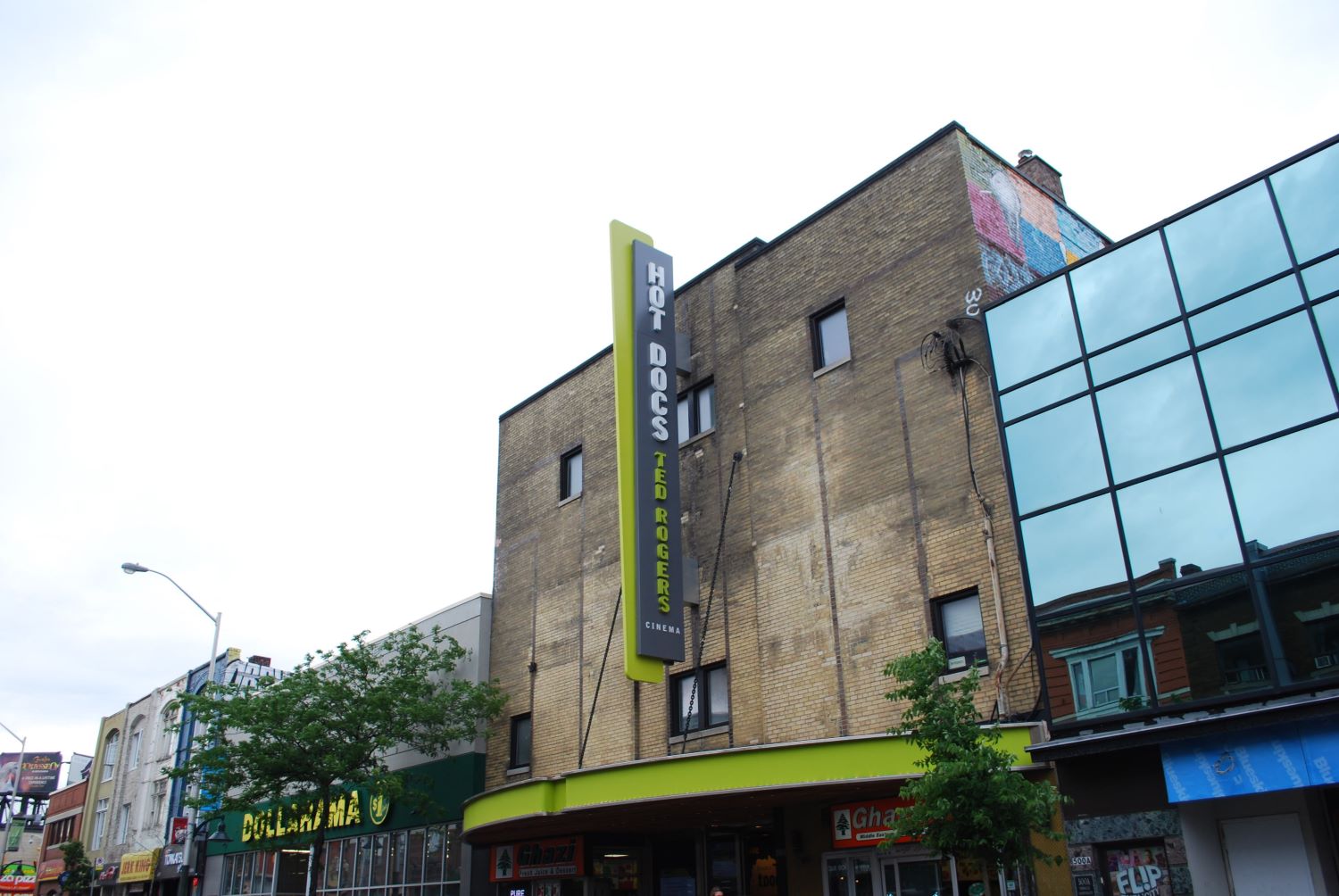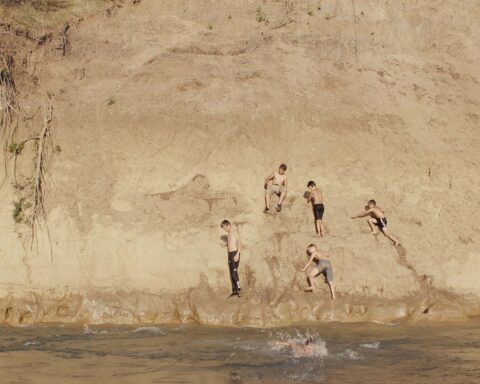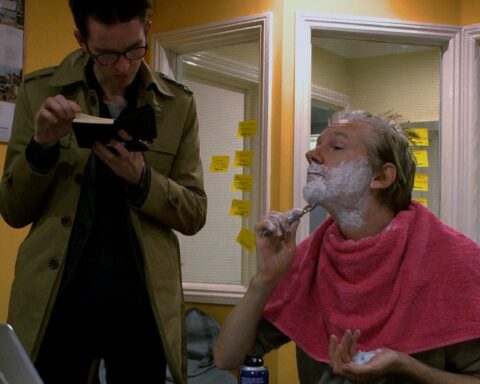Eagerly anticipated documentaries by Cree filmmaker Tasha Hubbard and Anishinaabe filmmaker Lisa Jackson are finally being released this spring with recent Canadian debuts at Hot Docs and DOXA. Hubbard and Jackson take Indigenous experts as their subjects, one focusing on the conservation of buffalo in North America and the other focusing on star lore and astronomy. Both films feel urgent, capturing revitalized knowledge before it’s too late.
Singing Back the Buffalo (2024) combines two of Hubbard’s passions, film and buffalo. Having directed documentaries since 2004, with such highly regarded films as Two Worlds Colliding (2004), Birth of a Family (2017), and nîpawistamâsowin: We Will Stand Up (2019), Hubbard has now turned her lens to efforts of Indigenous communities in North America to re-introduce buffalo to its former lands.
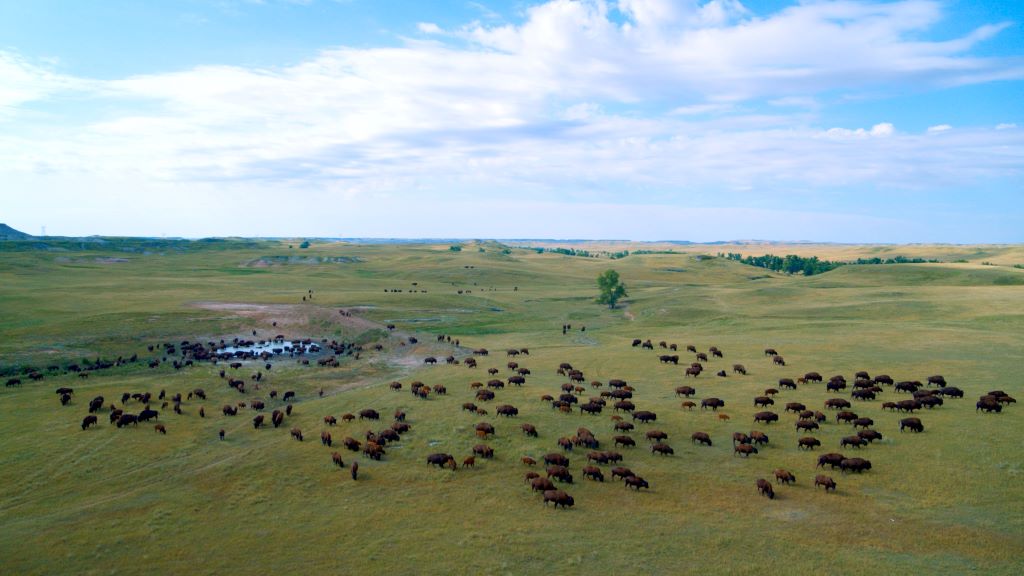
Two Worlds Colliding was in the edit stage when Hubbard went to a wedding in Regina, and, at the reception, author Maria Campbell asked her if she wanted to come see something special. It was a recently uncovered rib stone (a stone carved into the shape of a buffalo’s rib cage).
“Going to see that stone was so profound of an experience,” Hubbard says. “I started to think about what that did to us, as Indigenous people, to have this being that we lived in relationship with for so long [be gone].” She continues: “The emotional and spiritual impact of that loss had never occurred to me until I visited the stone.”
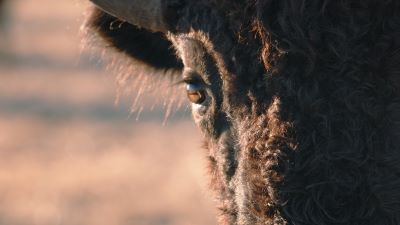
It motivated Hubbard, from the Peepeekisis First Nation in Treaty 4 in the Qu’Appelle Valley, to change her dissertation topic in 2016 to kinship with the buffalo. Crucial to understanding the power of Singing Back the Buffalo is understanding that Hubbard is an academic as well as a filmmaker: She is an Associate Professor at the University of Alberta, teaching classes in film studies as well as Countering Stereotypes of Indigenous Peoples.
Tasha Hubbard’s visit to the rib stone proved to be the seed of both Singing Back the Buffalo and her dissertation. The documentary tracks the peaceful but insistent intertribal efforts to restore free-ranging buffalo to places they once roamed. The beloved animal’s numbers were decimated in the 1800s with massive overhunting by non-Indigenous parties, with the remainder mostly confined to private ranches. It has taken over one hundred years, until the 2014 Buffalo Treaty, signed by Blackfeet Nation, Blood Tribe, Siksika Nation, Piikani Nation, the Assiniboine and Gros Ventre Tribes of Fort Belknap Indian Reservation, the Assiniboine and Sioux Tribes of Fort Peck reservation, the Salish and Kootenai Tribes of the Confederated Salish and Kootenai reserve, and the Tsuut’ina Nation, for work to be done to return buffalo to the plains.
The visuals of the film are breathtaking, with Hubbard incorporating a buffalo robe—a cured buffalo hide with the hair left on one side—that she was gifted during filming. The buffalo robe was scanned on a giant scanner, with the smooth side depicting a topographically accurate map of buffalo territory that appears in the film. The other side with hair is animated, showing the movement and tactile element of the hair, and is seen in the opening.

“I carefully packaged it up, put in my tobacco and I’m like, ‘Please go safely,’” recalls Hubbard, of sending the buffalo robe to the film’s animator, via FedEx. The aim with including both sides of the buffalo robe was to show people how beautiful it is, to pull audiences into the world where song and connection with the buffalo are much needed.
Originally the documentary didn’t place the director in front of the camera, but it became clear to the doc’s producers that her story truly forms the film’s non-fiction narrative. Hubbard is entrenched among buffalo activists and is a founding director of the International Buffalo Relations Institute, a non-profit organization that helps to implement the treaty, and that work is key to Singing Back the Buffalo. The whole thrust of the film is charting the slow, steady progress of the Institute to achieve the return of the buffalo to its natural land.
Still, Hubbard resisted being put in the film until executive producer Bonnie Thompson asked the director about any connection to buffalo in her childhood. “Growing up the way I did, I had very few ways to connect to being a Cree person. My adoptive parents tried, but they were a young farming couple and didn’t know any Indigenous people,” Hubbard recalls saying to Thompson. “When I was little, we used to drive up to visit family, through the Qu’Appelle Valley, and looking at those hills, I would feel something. It’s where my mother’s people are from, and I didn’t know that. I would feel connected. I would imagine buffalo and my ancestors.”

The emotions she conveyed to Thompson solidified that she did, in fact, need to be in the film. After an initial shoot in the winter of 2021 without Hubbard on screen, subsequent filming had her front and center, alongside the leaders taking charge to restore the buffalo back to North America. Later, in editing, they had to comb footage to find glimpses of the director behind the scenes to buttress her presence in the film.
Having its world premiere at Big Sky Documentary Film Festival in Montana was the perfect place for the film, as it mimics the movement of buffalos themselves.
“We worked with buffalo scientists on what was the range of the buffalo prior to colonialism, and it’s big. Missoula in Montana is in that area,” says Hubbard. “We really thought there’s something fitting to having the first public viewing in buffalo country.”
The film festival is located 30 miles south of the bison range, which in the film is represented by buffalo cared for by the Salish Kootenai.
“Our songs, ceremonies, hearts, and our spirits go into bringing buffalo back,” says Hubbard, who brought Blackfoot and Confederated Salish Kootenai singers to open several screenings.
“People see how big this is and how interconnected we are, and how the buffalo treaty as a vision, can help us work and help each other to learn from each other.”
While Hubbard’s film debuted at Big Sky in February, Lisa Jackson’s film Wilfred Buck launched at Copenhagen, Denmark’s international documentary festival CPH:DOX in March.
The hybrid documentary centers on Wilfred Buck, a Cree science facilitator with a vast knowledge of Indigenous star stories. A charismatic presence, Buck has spent years travelling around to Manitoba’s First Nations with an inflatable planetarium, teaching children about Cree constellations. Jackson is proud of making a film that captures the story of such a multi-faceted man: storyteller, speaker, Indigenous motivator.
As with past projects, Jackson, who is Anishinaabe from the Aamjiwnaang First Nation, felt a weird creative zap when she heard about an expert in Indigenous star knowledge at a panel at the University of Toronto. A panelist from the Canada Science and Technology Museum mentioned Buck and Jackson asked to be put in touch with him. When she called Buck, the timing was right. Buck had just finished writing his life story down and asked the filmmaker if she wanted to read it. He emailed it over and she was immediately amazed.
“The way he wrote was like, total beat poet,” she says. “[He had] such a cool voice and his story, which I quickly realized was unique to him, also was the story of colonization.”

Buck had been homeless, run from skid row to skid row, and hit barrier after barrier, before he returned to his culture and community. It took years before Buck became an educator and spiritual guide. He is now renowned in astronomy circles for gathering and teaching Indigenous star stories.
The other zap for Jackson was that she had recently become infatuated with sturgeon, the large freshwater fish, and wanted to include the species in her VR project Biidaaban: First Light (2018) but was unable to do so. And there, reading the last page of Buck’s life story, was the teaching of the sturgeon star constellation—surely a sign that she should make a film about him.
Jackson was teaching at the National Screen Institute’s IndigiDocs program, which brought the Toronto-based director to Winnipeg, when she and Buck had several meetings to get to know one another. After she asked if he’d be the subject of her film, Buck requested that Jackson attend the Sundance ceremony he leads every summer up north. Jackson and NFB producer Alicia Smith attended in 2018, and after the multi-day ceremony, he agreed.

A stylishly made hybrid documentary, Jackson’s film weaves together re-enactments of Buck’s really tough early years, including poverty and addiction, with beautiful pictorial 1960s and 1970s archival materials from the NFB, and vérité footage of Buck from today, driving and talking.
“I hope the approaches to showing his past life and what it’s like now, the poetic sequences and star knowledge stories, would [create] a kind of a synergy that could bring us out of a simple emotional story,” says Jackson. By amalgamating different elements in Buck’s life, from the wisdom of the stars to the joys of being on the road, Jackson was able to capture Buck’s spiritual quest.
Buck is always on the road, a highly in-demand speaker and educator, so Jackson chose to interview him in his car. As she sees it, he’s driving from one good thing to the next.
“I realize now it’s hard to imagine doing a proper sit and lit standard interview with him,” says Jackson. “I don’t think it’s something he’d be particularly comfortable with,” she admits, adding that she’s really proud that Wilfred Buck adapts to her film subject, and not the other way around.
And of course, there are the stars, our oldest living relatives, and the sturgeon, which have been around since the dinosaurs, which Jackson saw as symbols of continuity.
“Even though colonialism came and wreaked so much destruction, the knowledge continued, it was carried forward, it has been passed along,” she says. “The stars and the sturgeon were always part of that.”

